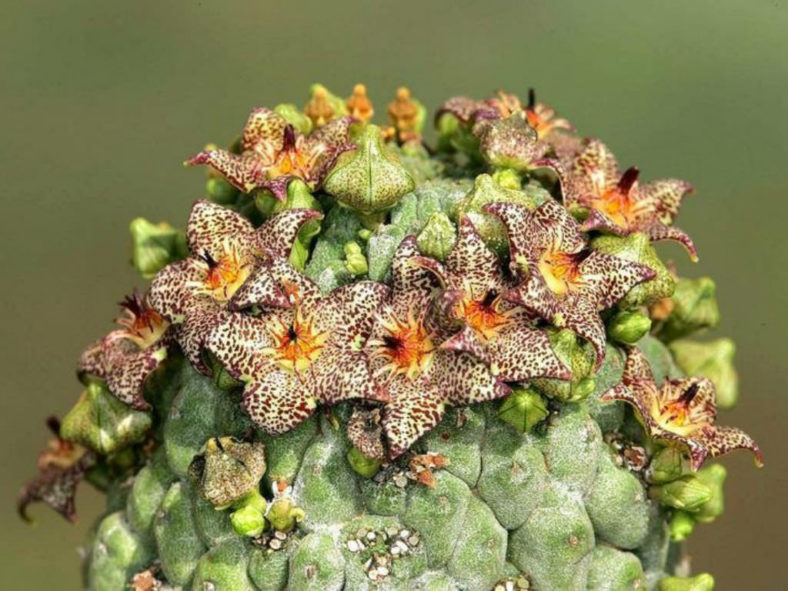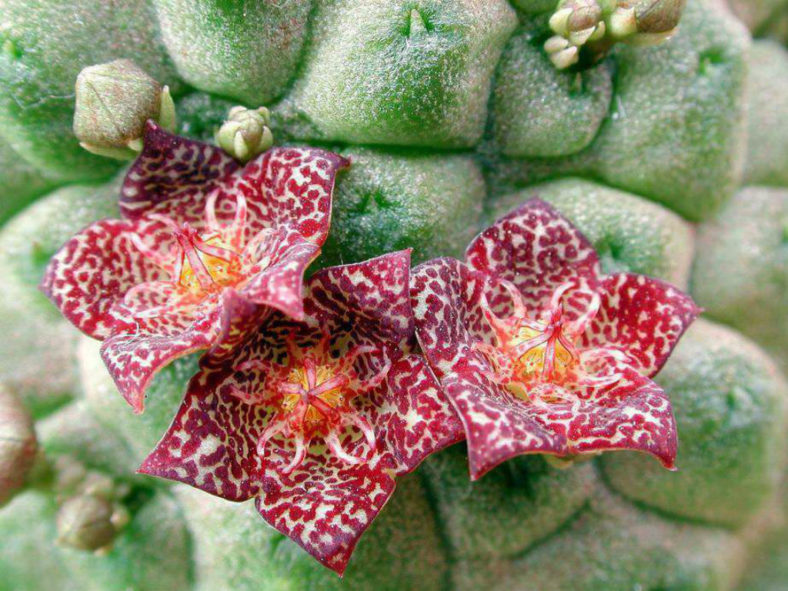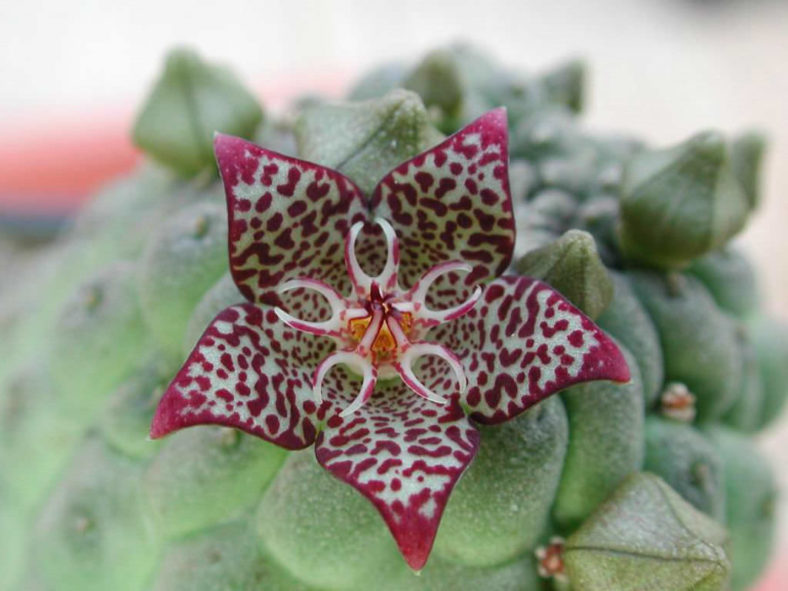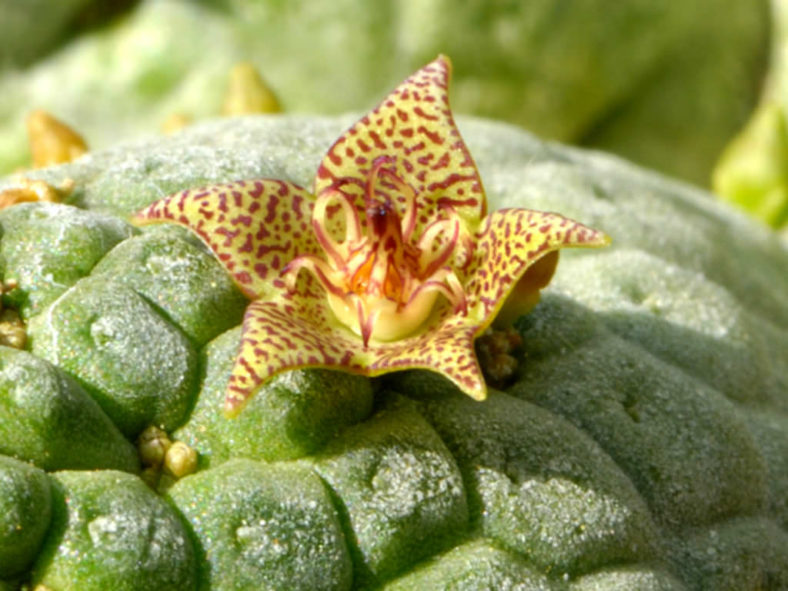Scientific Name
Larryleachia marlothii (N. E. Br.) D.C.H. Plowes
Synonym(s)
Ceropegia marlothii, Hoodia marlothii, Lavrania marlothii, Leachia marlothii, Leachiella marlothii, Trichocaulon marlothii
Scientific Classification
Family: Apocynaceae
Subfamily: Asclepiadoideae
Genus: Larryleachia
Etymology
The specific epithet "marlothii" (pronounced "mar-LOTH-ee-eye") honors Rudolf Marloth (1855-1931), a German-born South African botanist, pharmacist, and analytical chemist, best known for his work "The Flora of South Africa," published in six volumes over nearly 20 years.
Origin
The native range of Larryleachia marlothii extends along much of Namibia, eastwards into the Northern Cape province of South Africa, and may well extend into southern Angola as well. It grows in stony flats with windblown sand.
Description
Larryleachia marlothii is a small succulent with erect to spreading, egg-shaped to club-shaped or nearly cylindrical stems with flattened polygonal tubercles, crowded but arranged into 12 to 19 rows, each tipped with a small leaf-rudiment. The stems can grow up to 6 inches (15 cm) tall and 2.2 inches (5.5 cm) in diameter, branching from the base and forming a clump of 3 to 30 stems.
The flowers appear solitary or in groups of 2 to 5, mainly in the upper parts of the stem in summer, developing successively. The corolla is smooth, bell-shaped to more or less wheel-shaped, and can reach a diameter of 0.6 inches (1.5 cm). Inside is variously mottled with red to dark red-brown on a cream background, sometimes nearly uniformly dark purple-brown. Outside is green, spotted with red. The corona can measure up to 0.2 inches (0.5 cm) in diameter, irregularly spotted, and lined with pink to maroon on a cream background.

How to Grow and Care for Larryleachia marlothii
Hardiness: USDA hardiness zone 9a to 11b: from 25°F (-3.9°C) to 50°F (10°C).
Stapeliads are relatively easy to grow. However, they should be treated as outdoor plants as they will easily rot indoors and cannot flower without exposure to outdoor temperature fluctuations. They should be grown under cover so that watering can be controlled. Stapeliads require a reasonable amount of sunlight to promote flowering and maintain a well-shaped plant. Very shady positions will produce very poor flowering.
These plants come from climates where they survive extremely high summer temperatures, so most growth occurs in spring and fall, with flowering in fall as the weather cools. During the growing season, water moderately when needed, ensuring the soil is pretty dry between waterings. Do not water between late fall and early spring.
The easiest and best way to propagate Stapeliads is from stem cuttings, which can be taken virtually year-round. Seed is also a method of propagation.
See more at How to Grow and Care for Stapeliads.
Links
- Back to genus Larryleachia
- Succupedia: Browse succulents by Scientific Name, Common Name, Genus, Family, USDA Hardiness Zone, Origin, or cacti by Genus
Photo Gallery
Click on a photo to see a larger version.


